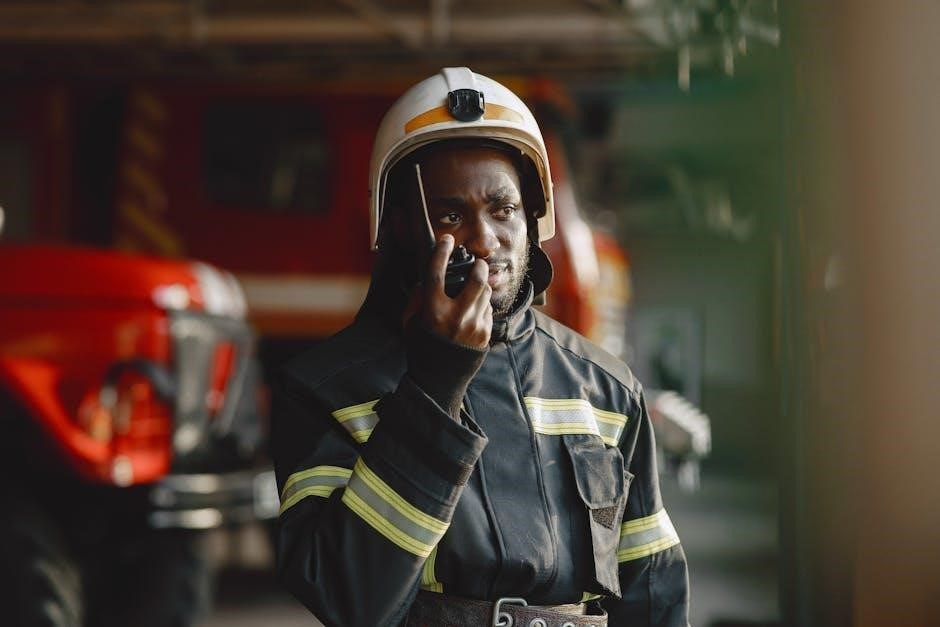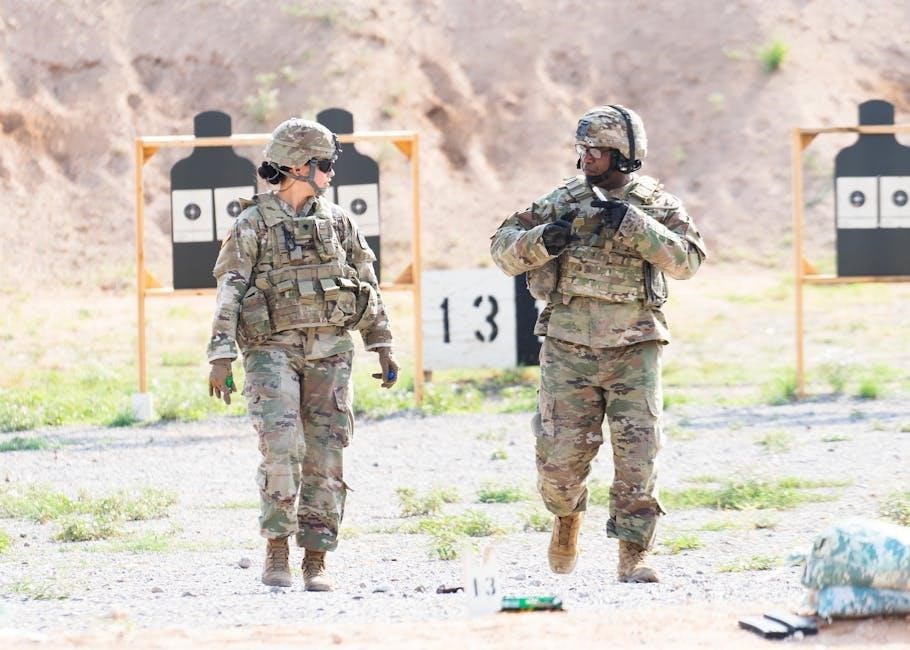
Firefighter training drills are essential for preparing firefighters, using various training methods and equipment, including thermal imaging cameras and ladders, every single day․
Overview of Training Objectives
The primary objective of firefighter training drills is to equip firefighters with the necessary skills and knowledge to respond effectively in emergency situations․ This involves a range of training objectives, including rescue operations, fire suppression, and emergency medical response․ The training objectives are designed to be specific, measurable, achievable, relevant, and time-bound, ensuring that firefighters are well-prepared to handle various scenarios․ The objectives also take into account the unique challenges and hazards associated with firefighting, such as working in confined spaces and navigating hazardous environments․ By outlining clear training objectives, fire departments can ensure that their personnel receive the training and support they need to perform their duties safely and effectively, and to provide the best possible service to their communities, using various methods and techniques․

Types of Firefighter Training Drills
Various drills include simulation exercises, ladder training, and equipment operation, every day․
Live Victim Rescue Drills
Live victim rescue drills are crucial for firefighters to practice rescue techniques, such as the modified Denver Drill, where two firefighters with SCBA stand a victim up and move them through a window prop․ This drill requires coordination and communication between firefighters to ensure a successful rescue․ The drills are designed to simulate real-life scenarios, allowing firefighters to develop the necessary skills to respond to emergencies effectively․ By practicing these drills, firefighters can improve their ability to rescue victims in tight spaces and other challenging situations․ The goal of these drills is to prepare firefighters for the physical and mental demands of live victim rescues, and to help them develop the skills and confidence needed to perform these rescues safely and efficiently․ Firefighters must work together as a team to achieve a successful outcome․
Importance of Realistic Training
Realistic training prepares firefighters for unexpected situations and emergencies, using various scenarios and equipment every day always․
RIT Training and Scenario-Based Drills
RIT training is crucial for firefighter safety, involving scenario-based drills that simulate real-life emergencies․ These drills help firefighters develop critical thinking skills and adapt to changing situations․ By using scenario-based training, firefighters can practice responding to various emergencies, including rescue operations and hazardous materials incidents․ This type of training also enables firefighters to work together as a team, communicating effectively and making quick decisions․ The goal of RIT training is to prepare firefighters for the unexpected, and scenario-based drills are an essential part of this process․ Effective RIT training can help reduce the risk of injury or death, and improve overall firefighter safety․ Fire departments can use various training methods, including simulations and live drills, to provide realistic and challenging scenario-based training for their personnel․
Role of Company Officers in Training
Company officers play a key role in training, educating, and mentoring crew members effectively always․
Training Plan Development and Implementation
A well-structured training plan is crucial for effective firefighter training, it should include clear objectives and outcomes․
The plan should be developed and implemented by experienced company officers, who can identify the needs of their personnel․
A good training plan should be flexible and adaptable to different situations and scenarios, and should include a variety of training methods and equipment․
The plan should also include a system for evaluating and assessing the effectiveness of the training, and for identifying areas for improvement․
This will help to ensure that firefighters are well-prepared and equipped to handle a range of emergency situations, and that they can respond quickly and effectively․
The training plan should be regularly reviewed and updated to ensure it remains relevant and effective․

Thermal Imaging Camera Training
Firefighters use thermal imaging cameras for search and rescue operations, every day, using various techniques and methods, with short training drills․
Short Training Drills for Skills Acquisition
Short training drills are designed to provide firefighters with the skills they need to perform their jobs effectively, using a variety of techniques and methods․ These drills are typically short, lasting from a few minutes to an hour, and are designed to be repeated regularly to reinforce learning․ They may include hands-on training, simulations, and scenario-based exercises, and are often tailored to meet the specific needs of the fire department or individual firefighters․ The goal of these drills is to help firefighters acquire the skills they need to respond to emergencies safely and effectively, and to stay up-to-date with the latest techniques and technologies, including thermal imaging cameras and other equipment, every day and in different situations and locations․
Conducting Effective Training Sessions
Effective training sessions require planning, organization, and clear communication, using various methods and techniques daily․
Scene Size-Up and Incident Command Structure
Conducting a thorough scene size-up is crucial in determining the best course of action during an emergency response․ This process involves assessing the situation, identifying potential hazards, and establishing an incident command structure․ A well-organized incident command structure is essential in ensuring a coordinated response effort, assigning tasks, and allocating resources․ By conducting regular training drills, firefighters can develop the skills and knowledge necessary to effectively size-up a scene and establish a command structure․ This training can be incorporated into various drills, including live victim rescue drills and thermal imaging camera training, to prepare firefighters for real-world scenarios and improve their response times and effectiveness․ Effective scene size-up and incident command structure are critical components of successful emergency response operations․
Adapting Training Drills to Local Needs
Local fire departments adapt training drills to meet specific community needs daily․
Weekly Firefighter Training Skill Drills
Weekly firefighter training skill drills are designed to provide firefighters with regular practice and reinforcement of essential skills․ These drills can be adapted to meet the specific needs of local fire departments and can be used to train firefighters in a variety of scenarios․ The drills are typically short and focused on a specific skill or task, such as ladder operations or hose handling․ They are often conducted on a weekly basis and are used to supplement other training programs․ By providing regular practice and reinforcement of essential skills, weekly firefighter training skill drills can help to improve firefighter performance and reduce errors․ This type of training is essential for maintaining proficiency and preparing firefighters for emergency situations․ Regular training helps to build confidence and ensures that firefighters are ready to respond to any situation․